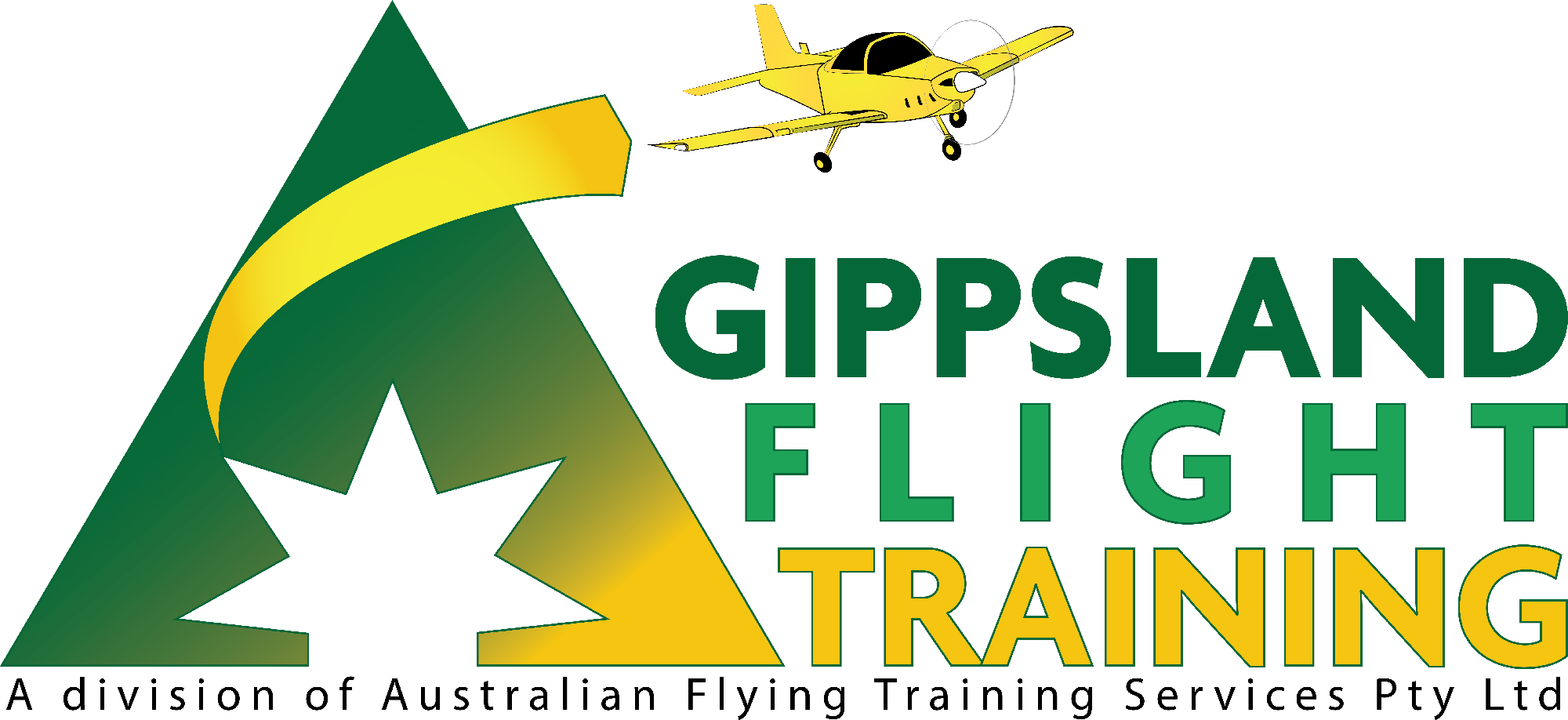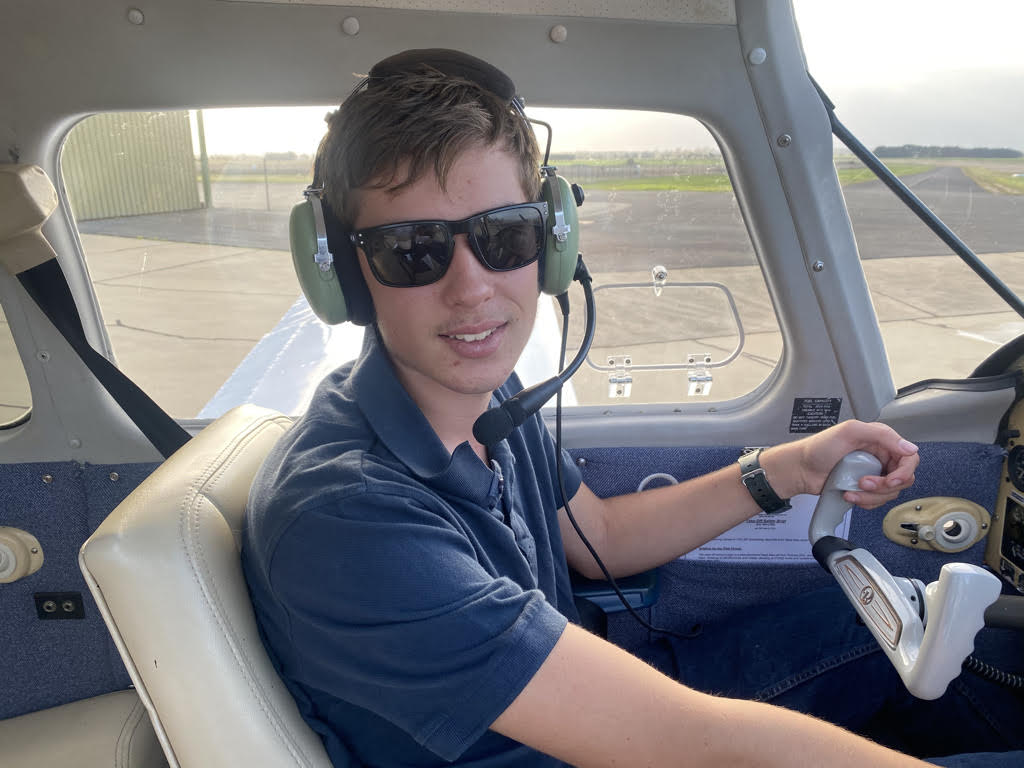Call, text or email us to make a 90-minute appointment to discuss your pilot aspirations with our Head Of Operations (‘HOO’). He will be able to give you guidance and sound advice on every aspect of flight training in General Aviation in Australia, as well as his views on upcoming career opportunities. There is no charge for this initial consultation. If you are under 18 years of age, parents or a guardian will need to attend and are indeed most welcome.
If you are unsure if you will be suited to and / or enjoy flight training or, perhaps, you’ve never flown in a small aeroplane before, a sensible low cost approach is to book a Trial Flight (see below).
If you decide to proceed with flight training you’ll need to apply on-line for an Aviation Reference Number (‘ARN’) from the Federal Government’s regulator of civil aviation in Australia, the Civil Aviation Safety Authority (‘CASA’) (see below).
Once CASA issues your ARN you will then need to commence the on-line application for a CASA Medical Certificate including making a booking with a Designated Aviation Medical Examiner (‘DAME’) (see below).
Learning to Fly
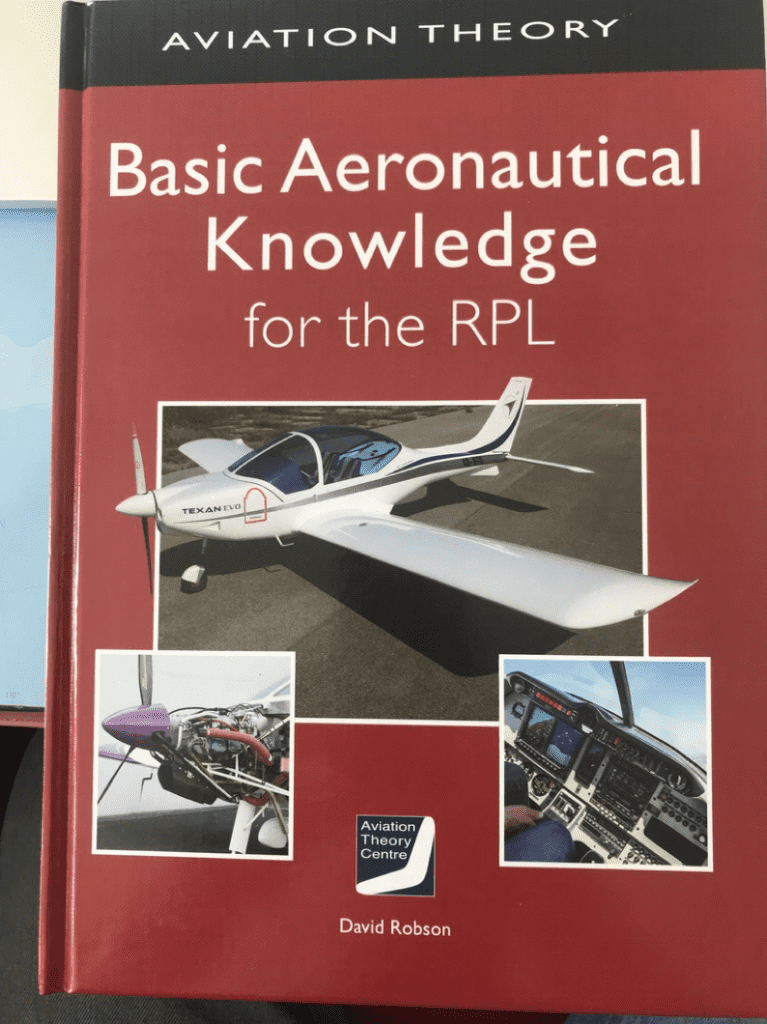
Study
Study is required to gain a pilot’s licence, so you will need to commence studying for the RPL(A) Theory as early as possible, preferably before you commence flight training. We recommend Aviation Theory Centre’s excellent hard and e-copy textbooks and various training manuals. You will be provided with guidance on getting the most out of the ATC RPL(A) Textbooks and your theory progress will be monitored as you proceed through the flying training syllabus. We can provide comprehensive theory training Monday to Thursday evenings but minimum class numbers apply.
Foundation Flight Training
With your ARN and CASA Medical Certificate issued the next step is to commence training for your Recreational Pilots Licence (‘RPL’), beginning with our Foundation Flight Training module, which takes as few as 11 full days (16 one-hour flights of Dual Flight Instruction) and culminates in your First Circuit Solo – a pivotal moment in your lifetime and something which all pilots do at the very beginning of their career.
Pilot-In-Command
After your First Circuit Solo you begin the second module of flight training culminating in the First Training Area Solo, taking a minimum of nine full days. By now you will have a total of around 30 hours including 5 hours of solo (‘Pilot-In-Command’) flight time.
CASA Flight Test
Module 3 consists of the last few Dual sequences for the RPL(A) and building your PIC hours as well, taking a minimum of eight full days, finishing with approximately 40 hours’ Dual and 10 hours’ PIC in total. The RPL(A) requires a formal CASA written examination – which we conduct in-house – as well as a formal CASA Flight Test with a Flight Examiner. Once passed you can hire one of our aeroplanes and take a passenger within 25 NMS of your departure aerodrome during daylight hours.
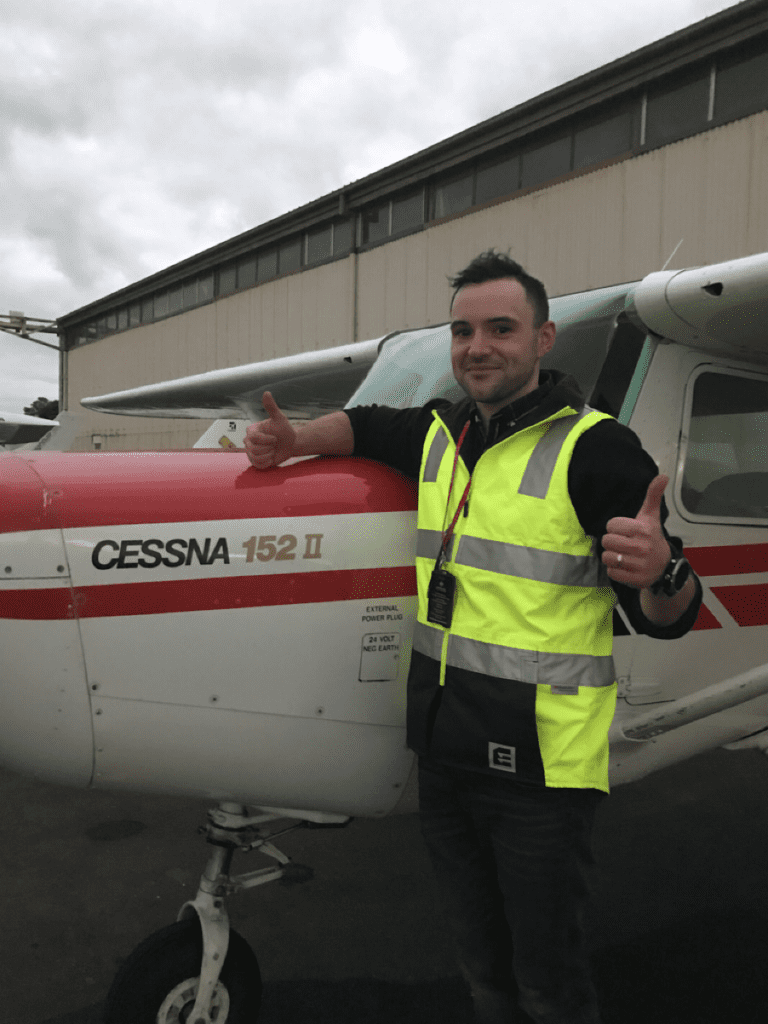
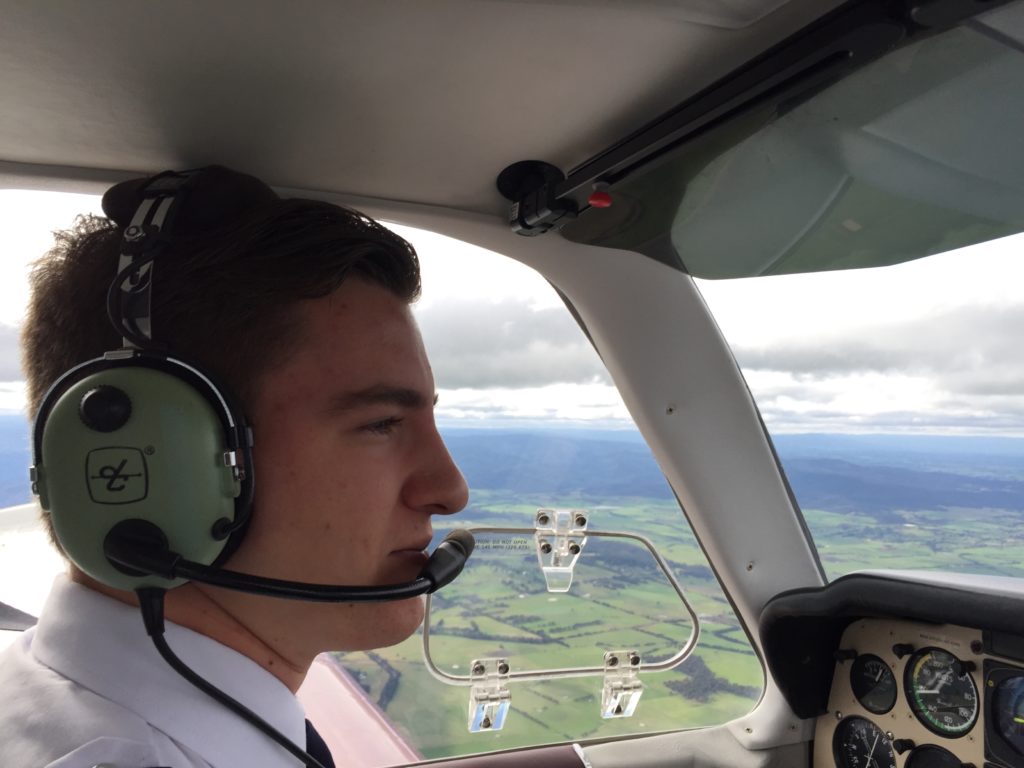
Navigation Exercises
The RPL(A) is a legitimate pilots licence throughout Australia but is somewhat limiting as it does not allow you to fly ‘cross-country’ and land at other airfields, so Module 4 is all about doing the Navigation Exercises (‘Navexes’) and further PIC consolidation in the local circuit area and Training Areas to qualify you for the Private Pilots Licence (Aeroplane) [‘PPL(A)’]. This module takes a minimum of 17 full days and also requires significant theory studies and a formal CASA written examination – which we also conduct in-house – as well as a formal CASA Flight Test with a Flight Examiner. Once passed you can hire one of our aeroplanes and take passengers anywhere in Australia (apart from capital city and military airports) during daylight hours in good weather conditions.
Onwards and upwards
After your PPL(A) is issued you do not need any other training unless you would like to fly:
- more complex aeroplanes including those with various ‘Design Features;’
- Flight Activities such as Aerobatics or Formation Flying;
- at night (a ‘Night VFR Rating’);
- in bad weather (an ‘Instrument Rating’) or;
- if you decide to take the plunge and fly commercially, a Commercial Pilots Licence [‘CPL(A)’] with a Flight Instructor Rating and / or Multi-Engine Aeroplane Class Rating.
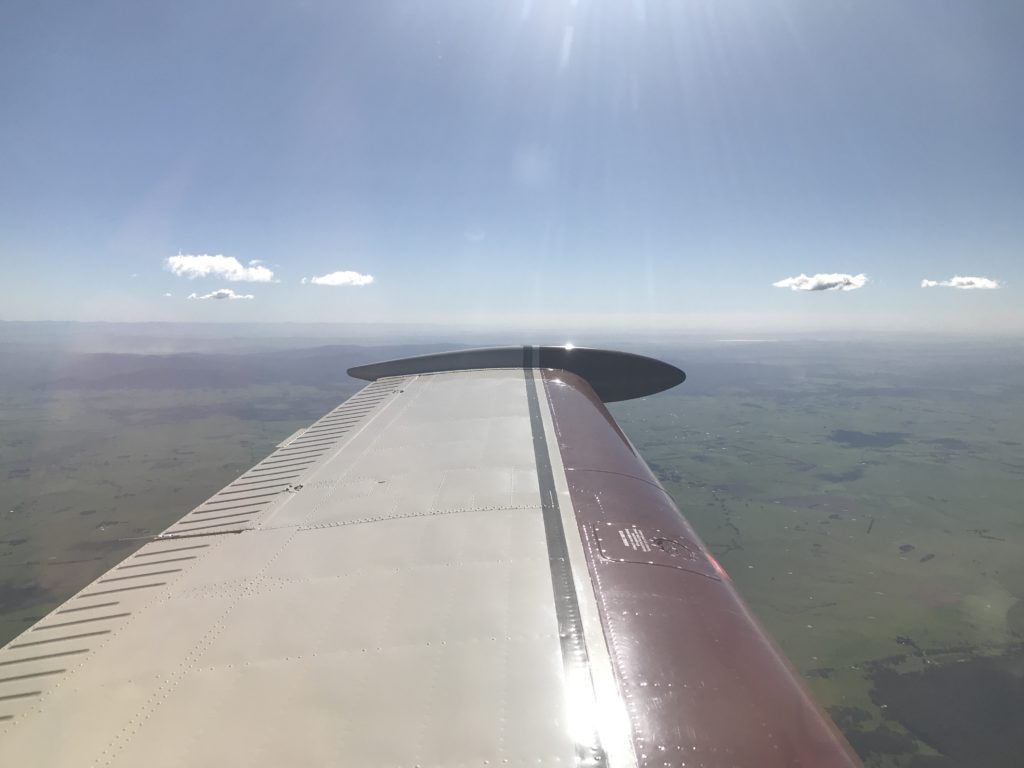
We can provide flying training and the associated knowledge training for just about any imaginable land-based aeroplane (i.e., not balloons, floatplanes, gliders, hang gliders, gyrocopters, helicopters or powered parachutes, etc!) Licence; Rating; Design Feature Endorsement; Flight Activity Endorsement; or Flight Instructor Initial, Refresher and / or Training Endorsement.
Take the plunge
Applying for an Individual Aviation Reference Number (‘ARN’)
Applying for an Individual ARN is a simple on-line process via the CASA website. You fill in Form 1162 and attach 100 points’ worth of pre-certified documents, e.g., Passport, Drivers Licence, Medicare card. CASA will email your ARN – which you keep for life – within a day or two. Once you have your ARN you will need to go onto the CASA website again and commence the application process for your Medical.
Completing a CASA Pilot Medical
A CASA Pilot Medical Certificate is required prior to your First Circuit Solo flight and ultimately validates your pilots licence/s and allows you to keep flying. A very quick and simple option for newcomers to aviation in Australia is to go online at www.casa.gov.au and follow the steps to apply for a Class 5 Medical. This is ideal for new Students as it allows you to go all the way through to the Private Pilots Licence [“PPL(A)”] allowing you to fly with a one passenger in Day VFR conditions only.
We strongly recommend that you attempt a Class 1 Medical – despite some potential additional costs – as many people get through their PPL(A) training on a Class 2 Medical then decide that they would like to fly commercially, i.e., get paid for flying, which generally requires a Class 1 Medical. Once again, it’s not a good time to discover that you may not be able to hold a Class 1 Medical for some obscure reason. Also, you can let your Class 1 lapse and keep flying privately on your Class 2 as it will have an extra year or two before renewal is needed, depending upon your age.
Your initial pilot Medical Examination is very thorough and can be a somewhat arduous and occasionally costly process if there are any complicating factors requiring additional medical review. That said, it is better to get it done before commencing flying training or risk discovering that you are unable to hold a CASA Medical for some obscure reason and all of your time, money and effort has been wasted. Not-to-mention the significant disappointment if you are about ready for your First Circuit Solo flight!
You will need to book a “CASA Class 1 Medical” with a CASA-approved Designated Aviation Medical Examiner (‘DAME’) near to you. Ask us about your local DAME options.
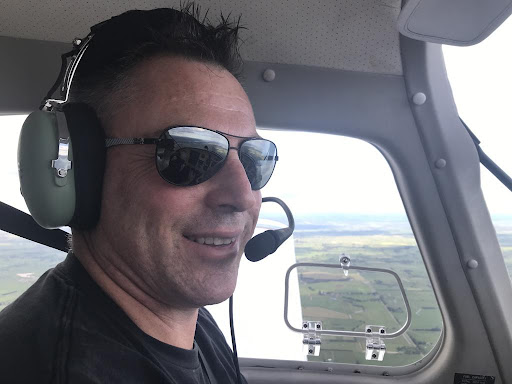
Trial Flights
Trial Flights
A Trial Flight is much like a normal flying lesson, only a little less formal. All of the normal safety protocols still apply. We offer these at a significantly reduced rate to attract new Student Pilots, as do other flying schools.
During the Trial Flight you will actually fly the training aeroplane from the ‘command seat’ – under the watchful eye of a fully-qualified Commercial Pilot/Flight Instructor. For 99% of people it is an eye-opening and wondrous experience. For the Instructor it is a brief opportunity to observe your responses and reactions to this very dynamic three-dimensional world and give honest feedback on your potential during the debrief.
Some people might find it a little intimidating but this is rarely the case. Others may have a tendency to become airsick but this usually disappears completely after the first two or three lessons.
Whilst not constituting a formal syllabus lesson you are still able to log the flight time (i.e., from taxiing for the purpose of flight until engine shutdown afterwards) towards your Licence requirements.
Equipment
You won’t need any aviation-specific equipment for your initial training, e.g., an audio headset, as we provide one up until First Circuit Solo. After that it is appropriate to purchase your own – after discussing the various options available. It is a very good idea to wear non-polarising sunglasses as the glare can be significant in aeroplane cockpits.
You will need to wear comfortable clothing which is not loose-fitting and reasonably rugged, e.g., jeans, collared cotton T-shirt and runners. Boots are generally a bad idea as they can sometimes snag underneath the instrument panel and affect the operation of the toe-brakes on top of the rudder pedals.
Training Options
You can learn to fly full-time or part-time, depending on your availability, learning capacity and financial constraints.
Obviously it also depends upon our capacity to fit you in with our Student training workload, so the more notice you can provide us of your training needs the better.
Most importantly, continuity is the key to successful flying training, so if you cannot attend for at least three full days per month, your training will suffer and you may need refresher training and, therefore, incur additional costs. Our preference is for you to pick a day of each week that you can commit to so that we can focus our efforts solely on you for that day.
Sadly, a lack of continuity often leads to a loss of motivation and eventually Students giving up, so if you are really time poor and don’t have one full day or two half days each and every week – or one or two week blocks such as school holidays – then it will probably ‘end in tears!’
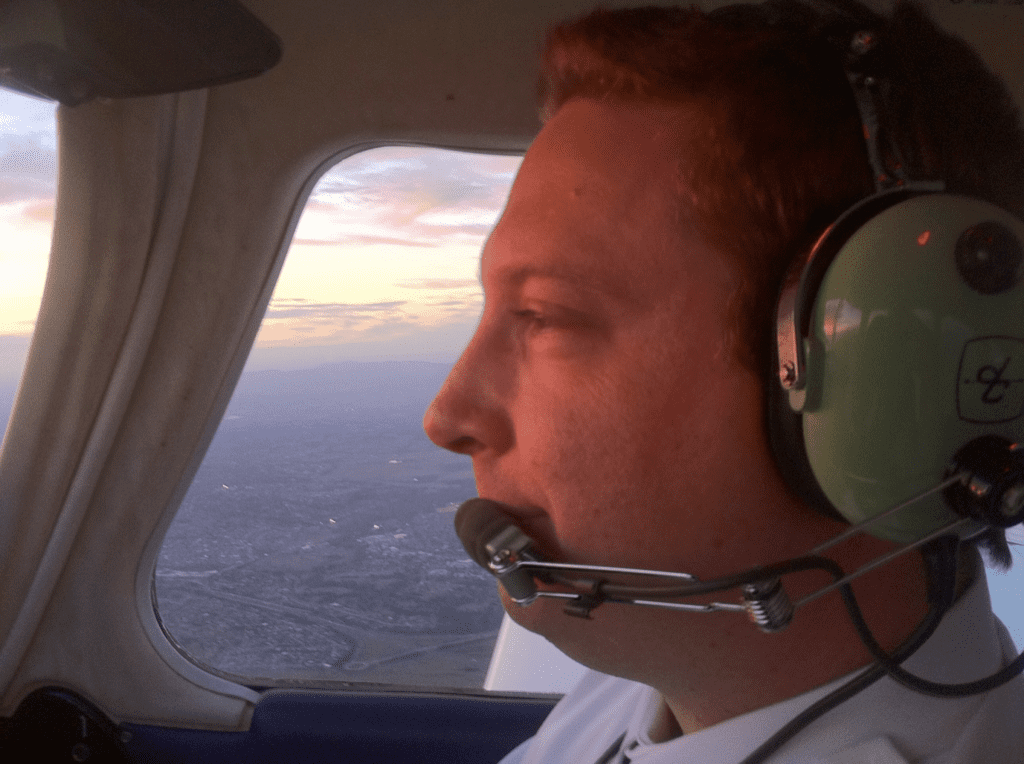
Professional Pilot Training
Professional Pilot Training (‘PPT’) Course
Our unique PPT Course is designed for the few young, well-educated and highly-motivated who desire a fast-tracked pathway into a professional pilot career.
Ideally you will have Year 12 passes in English, Mathematics, Physics and Chemistry and possibly other sciences, as a minimum. You will be able to meet the CASA Class 1 Medical standard and successfully complete our rigorous selection process prior to commencement.
The residential course is delivered over 18 months full time Monday to Friday. You will graduate as one of the best trained and qualified pilots, including those of the Defence Forces, with the skills, knowledge and behaviours you need to excel as one of our Company Flight Instructors for a few years before moving on to a career as a jet airline pilot.
Since the course is modular in design you will have the option of leaving and re-entering (at the beginning of your most recently vacated module) if a situation arises which forces you to suspend your training. This course has resulted from our HOO’s decades of training design and implementation experience in both civilian and military flying training organisations. It is the fastest and most cost-effective way of getting into a professional pilot career path with real long-term options.
Training Costs
Training for any pilots licence or further ratings is a significant financial impost for most people.
One way we contain costs and prevent budgetary blowouts is by having very detailed Syllabuses for each Licence, Rating, Design Feature Endorsement, Flight Activity Endorsement and Flight Instructor Training Endorsement. So if you are able to commit to our recommended minimum rate of effort, we can assure you that you will achieve the licence on time and on budget because it is in our best interests for that to happen!
Furthermore, we are so confident in the efficacy of our various training packages that we are able to offer package deals for all of our syllabuses which fixes the cost for you and puts the onus back on us to get you qualified on time and on budget. Ask us how! And we put it into a legal signed agreement so there are no potential issues down the track.
Note that we do not support VET Fee Loans or HECS funding as these add a substantial overhead to course fees as well as compounding interest on the loan – which the recipient has to pay back to the government in due course.
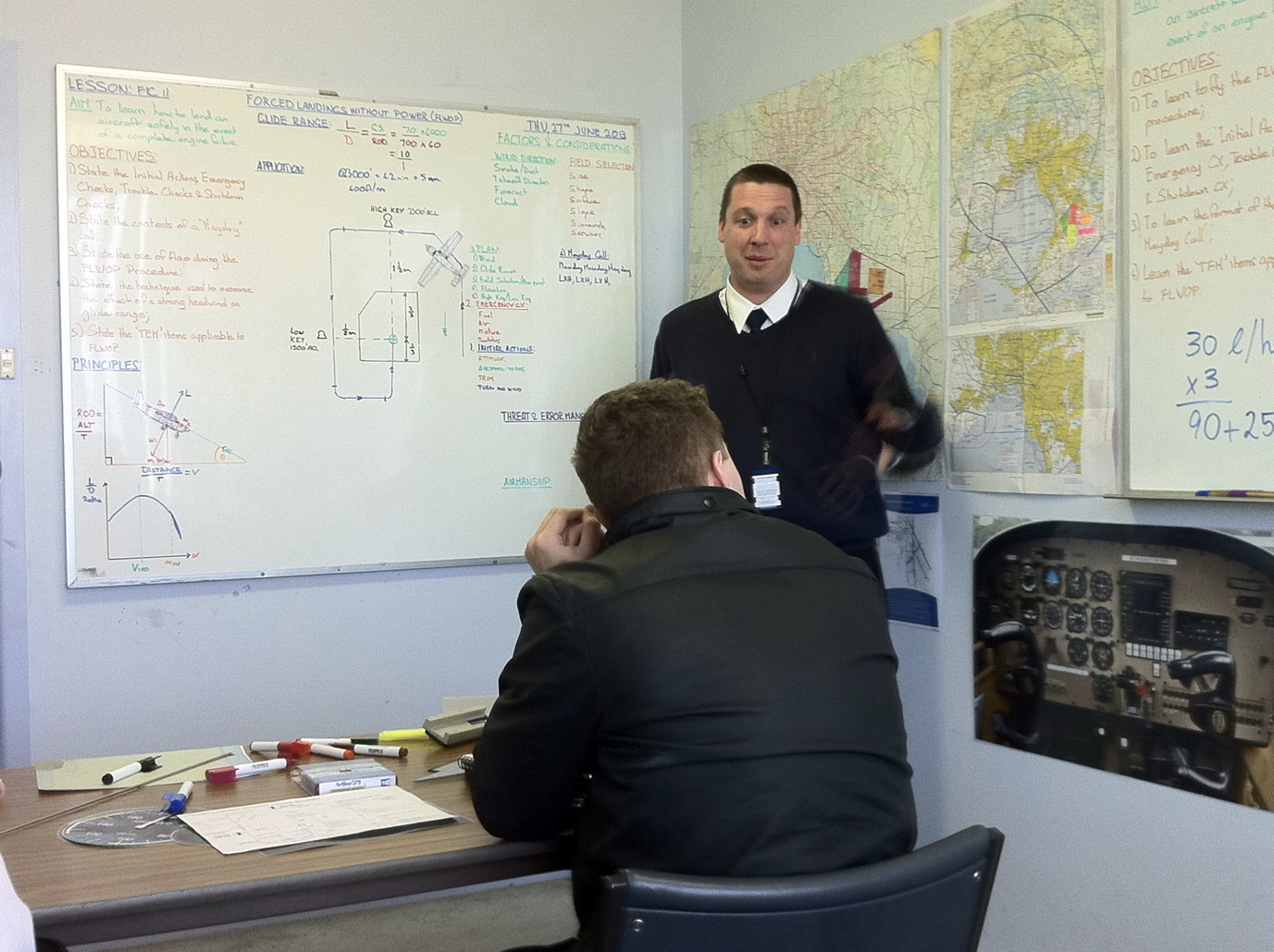
Achieve your goals
A Standard Lesson looks like
Given the intensity, complexity and costs involved in each flying lesson, it is imperative that you are thoroughly briefed before every flight so that you are fully aware of what is going to happen, the expectations upon you and the desired syllabus outcomes. Furthermore, it is imperative that every single flight is thoroughly debriefed to maximise the Student’s learning experience by reinforcing the lessons learned and objectives achieved.
So our standard booking, not including a Long Briefing, for a 1.2-hour local training flight is 2.5 hours. It’s realistic, it’s achievable and it’s the minimum necessary to get the full value from each lesson and, thereby, minimise the risk of flight time and cost blowouts.
A standard lesson consists of
- Pre-Flight Brief (‘PFB’) before every flight, for about 30 minutes;
- Dual or Solo Flight in the Circuit or local Training Area of 1.2 hours;
- Debrief (‘DB’) and Post-Flight Administration after every flight, for about 30 minutes.
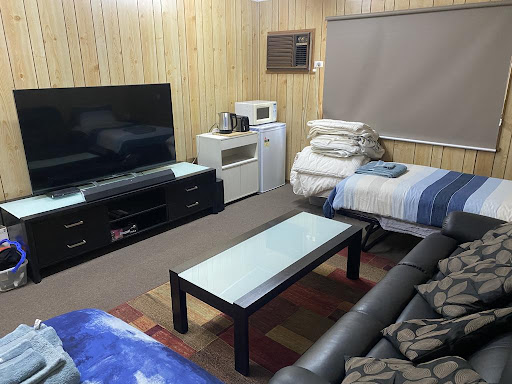
Accommodation options
Accommodation options
If you are from out-of-town we can assist you with a variety of accommodation options, including:
- B&B-style accommodation on-site, at only $25/night or $150/week;
- Motel accommodation starting from $99/night at the nearby Wurruk Motel or Riverstay Inn;
- Executive-style serviced apartments, e.g., Comfort Inn or Quest Studio at $160-188/stay; or
- Elegant 4-star country hotel living at the Criterion Hotel in Sale from $135/night.
The choice is yours.
